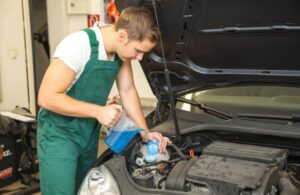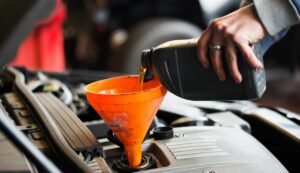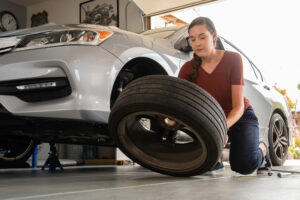Modern vehicles contain intricate systems that require expert knowledge and tools for repair. While some repairs require professional assistance, other DIY repairs can often be safely performed at home.
Follow these car maintenance tips to reduce wallet-draining surprises and ensure your vehicle runs reliably. Begin with easy tasks to gain confidence, then seek professional services when repairs become more complex.
Oil Change
Change your car’s oil regularly as part of routine maintenance to safeguard its engine and ensure optimum performance. To perform an oil change yourself, a few tools are required, including a drain pan for collecting old oil, wrench to unplug its plug and funnel to add the new oil without spilling over. In addition, consult your owner’s manual or online resources to determine what type and amount is suitable for your car.
Resetting the mileage trip indicator is another simple DIY car service you can perform yourself to stay on top of its maintenance needs and prevent overdue service appointments.
Other services you can perform at home include replacing spark plugs, resetting tire pressure gauges and inflating tires with recommended air pressure settings. Doing these tasks yourself will save both time and money while providing greater insight into the inner workings of your car.
Deciding whether or not to undertake DIY repairs and maintenance services is ultimately up to you and depends on your individual circumstances. But if an issue exceeds your skill set or you would rather entrust experts with solving it, it may be prudent to hire professional help instead.
Tire Rotation
Tire rotation refers to the regular repositioning of your vehicle’s tires in order to prolong tire life, reduce risk of blowouts and ensure optimal performance from your car. In general, tire rotation should occur every 5,000 miles if possible or as recommended by your manufacturer; during which you should inspect tires visually for damage, check air pressure levels and have any necessary rebalancing done if required.
Vehicle suspension systems consist of springs, shock absorbers and struts working together to absorb bumps and dips in the road surface and keep tires planted to the road for optimal performance and control. If your ride feels bumpy or bouncy it could be an indicator that worn-out suspension components need replacement; uneven tire wear or tread patterns could also be signs.
Tire rotation occurs by moving each wheel to different positions on your vehicle, from front tires moving backwards and vice versa. The specific pattern your tire service technician uses depends on your engine location and drivetrain configuration – front-wheel-drive vehicles tend to use front tires more quickly as these power transfer wheels move power directly onto the road while steering your vehicle – this leads to them wearing down more rapidly than non-drive wheels and eventually leading to vibration felt through steering wheels as well as reduced fuel efficiency.
Brake Inspection
When it comes to DIY car repairs, brake inspection can save both time and money. Your braking system is one of the most crucial safety components, ensuring you remain safe on the road. Inspection can detect potential problems early, providing ample opportunity for quick fixes to be addressed swiftly.
Starting off, a mechanic will inspect the brake master cylinder for leaks and test its fluid levels to make sure there is sufficient brake fluid available for use. Next, they will look over all lines and hoses to see if any are cracked or damaged before finally inspecting rotors to make sure they’re free from pits or grooves.
Importantly, a brake inspection should include checking your parking brake as part of its regular hydraulic brakes. A properly functioning parking brake can protect against rolling downhill when parked – such as while parking on an incline.
Leakage of brake fluid and soft/hard pedals are surefire indicators that it may be time for a brake inspection, while other indicators could include new noises or changes in responsiveness of your brakes.
Vehicle Diagnostics
DIY car maintenance can save money and extend the lifespan of your vehicle, and provide rewarding experiences for car enthusiasts who like getting their hands dirty and learning how their vehicles operate. However, it’s essential to understand when DIY repair and maintenance services make sense in comparison with professional auto mechanics, determining when it makes more sense to tackle things yourself and when professional mechanics should handle things.
Vehicle diagnostics is an efficient way of spotting potential issues before they cause irreparable harm. By connecting a special scanner to your car’s onboard computer, diagnostic tools can read error codes that indicate potential sources of issues – engine trouble, airbag malfunctions and more may all be revealed through diagnostic tools’ ability to read error codes – so that corrective actions can be taken before any further damage occurs.
DIY auto repairs have become an increasingly popular choice, but if not performed properly can be dangerous. Restoring transmission or engine components require specific skills not commonly possessed by most drivers. Furthermore, many DIY tasks require significant time commitment from drivers in terms of researching issues, acquiring tools needed for the task and mastering techniques required – any misstep can result in expensive repairs and even compromise your and your passengers’ safety.


